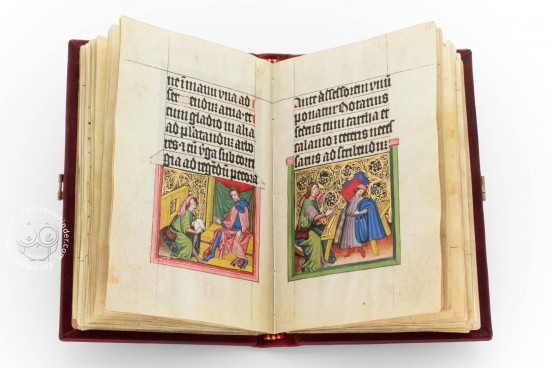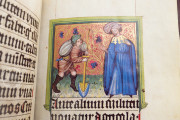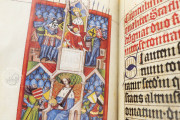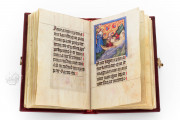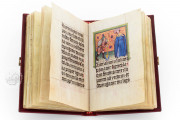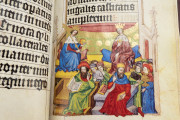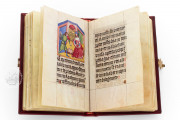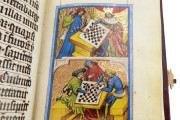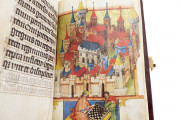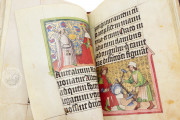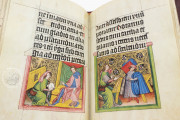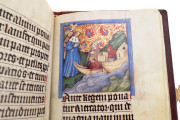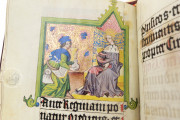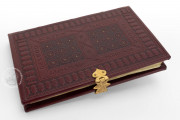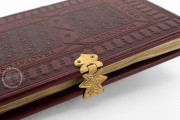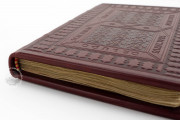The Madrid On the Game of Chess is an early fifteenth-century manuscript of an abbreviated version of a text by Jacobus de Cessolis known as Tractatus de Ludo Scacorum, where chess is understood as an allegory of the morals of society or the military. This manuscript, written in bold Textura Quadrata, is believed to be a product of the circle of Wenceslas IV, King of Bohemia, based on the stylistic features of its miniatures and historiated initials. The miniatures depict detailed cityscapes, architecture, and men engaging in games of chess and warfare.
This curious treaty on chess, which entered the National Library Manuscript section in 1869, comes from the Cabildo Bookshop in Toledo's Cathedral. It had previously belonged to the Librarian Cardinal of the Vatican, Francisco Javier Zelada (1717-1801). On page 47 there is the name of Innocenzo Romano, who might have owned the codex before Cardinal Zelada.
An Example of a Work Today Forgotten
The elegant Gothic lowercase lettering, certain abbreviation styles, and the traits of its delicate figures suggest an origin within the Bohemian Circle, centered in Prague under Wenceslas IV (1361-1419).
The text relates to a once-popular work now largely forgotten, which gained widespread acclaim across Europe by the end of the Middle Ages: the Tractatus de Ludo Scacorum, written by a Dominican named Jacobus de Cessolis, whose life remains largely unknown. He authored it in the late 13th century.
Despite the clear similarities, the Madrid On the Game of Chess should not be viewed as an abbreviation or summary of Cessolis's work due to significant discrepancies. Thus, an alternative source may be considered. Nevertheless, the model for the illustrations might have been a luxurious copy of Cessolis's book.
A Glimpse into the Spirit of Medieval Times
The work exemplifies the mindset of the medieval man and features fifteen vividly colored miniatures, some spanning full pages, divided into multiple scenes that illustrate the text. These depict court scenes, game scenes, and other scenarios such as war or various tasks, all intended to convey moral lessons.
The work comprises eight chapters with the following titles: I. Of its invention; II. How the chessboard represents the city of Babylon; III. How the chessboard presents two opposing kingdoms; IV. The meaning of chess pieces; V. How the arrangement of chess pieces instructs on setting up a camp; VI. How the movement of chess pieces signifies proper and commendable actions; VII. How the movement of chess pieces illustrates the organization of armies in battle formation; VIII. How the subsequent movement of chess pieces represents the confrontation of armies.
We have 1 facsimile edition of the manuscript "Madrid On the Game of Chess": Tractatus de Ludo Scacorum facsimile edition, published by Siloé, arte y bibliofilia, 2008
Request Info / Price
